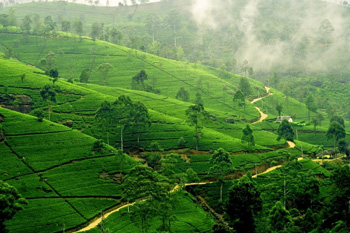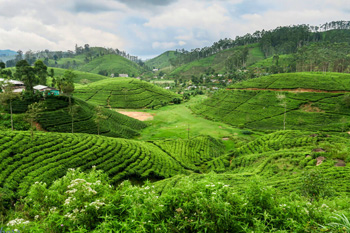About Ceylon Tea
Considered as the tea par excellence by tea drinkers worldwide due to its unmatched quality and diversity in flavor and aroma. PURE CEYLON TEA is the tea of connoisseurs with its inherent uniqueness in character. Its tea industry possesses an unparalleled reputation gained over a century and half when the first tea plantations came into being in the central highlands of this island nation. The unique salubrious spa like climate of the central highlands imparts a very favorable influence on the quality of the tea produced which is unmatched by teas produced in other regions of the world, leading to its status as the producer of the finest teas in the world
Globally it is the 3rd biggest producer and till recently the biggest exporter of tea meeting nearly 20% of worldwide demand. The total extent of land under tea cultivation has been assessed at approximately 187,000 hectares
The teas produced in Sri Lanka is categorized into 3 major varieties viz. the 1) High Grown 2) Medium Grown 3) Low Grown and each of them come from distinct elevations and regions as described below
High Grown



Medium Grown


Low Grown


The Health Benefits of Tea
For centuries numerous health benefits have been attributed to tea. In traditional medicines, the health benefits of tea were fully recognized thousands of years ago and it was used as a treatment for many infectious diseases, colds, and also as an aid to the digestive and nervous systems
With modern scientific research coming into the scene in the last few decades, more and more facts on this subject has shed light, testifying to the connection between regular tea consumption and the occurrence of a wide variety of diseases, including cancer and cardiovascular disease
Black Tea
Next to water, tea and to be precise black tea is the second most consumed beverage in the world. And due to its numerous health benefits it can be considered the premier or No. (1) health drink in the world
Black Tea is rich in antioxidants, including flavonoids, i.e., catechins, and polyphenols. It is these substances which primarily produce many of the health benefits observed in numerous research studies. Its action is usually related to their neutralizing and immobilizing those fearsome free radicals (caused by oxidation). See the Tea Association of the U.S.A. for more information on its health benefits. Below is a summary in brief of those benefits which should induce one to become an avid tea drinker
- Polyphenols and tannin in Black Tea acts as antibiotics inhibiting bacterial action in causing tooth decay
- The same polyphenols, according to numerous research studies, have been instrumental in preventing cholesterol from oxidizing and obstructing blood vessels. This action is of vital importance as it prevents oxidized LDL damaging both the bloodstream and artery walls, reducing the risk of both cardiovascular diseases and stroke.
- Polyphenols prevalent in tea seem to help in inhibiting and preventing formation of potential carcinogens in the body, especially in certain types of cancer, i.e. oral and lung
- Black Tea in addition seems to be useful in increasing insulin activity.
Black tea contains caffeine in moderate amounts and nowhere near that of coffee. As caffeine in moderate amounts has numerous beneficial effects on the human body it could be considered as a plus point
Green Tea
Though many believe Green Tea to be superior to Black Tea in health benefits this has been debunked and recent research has converged on the similarities in the health benefits of both Black and Green Tea. The earlier held views were mainly due to the lack of research done on the health benefits of black tea
